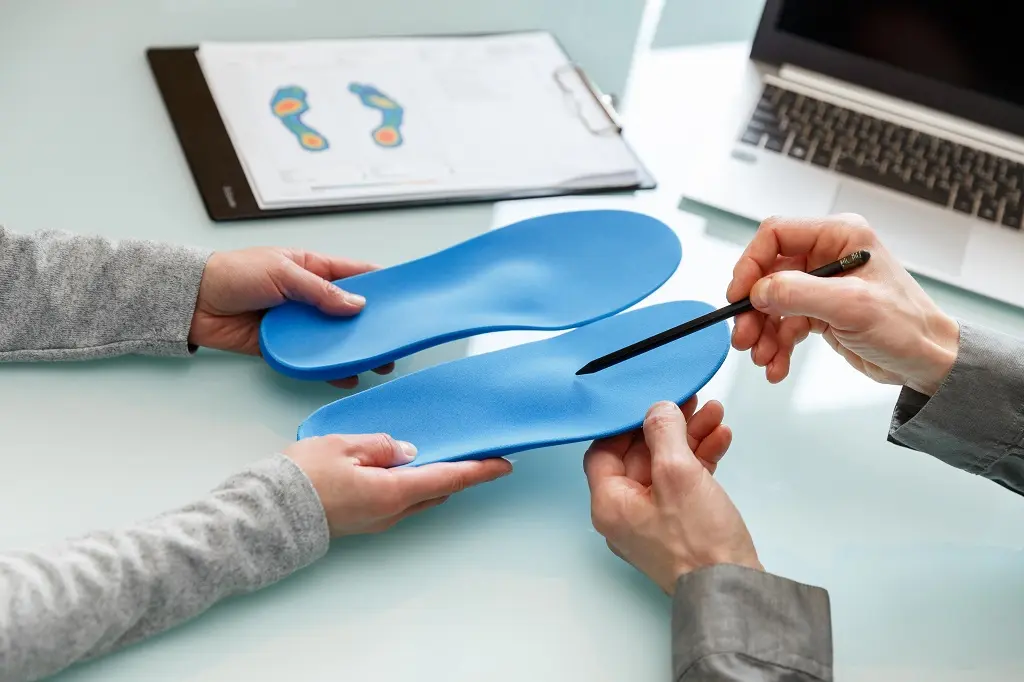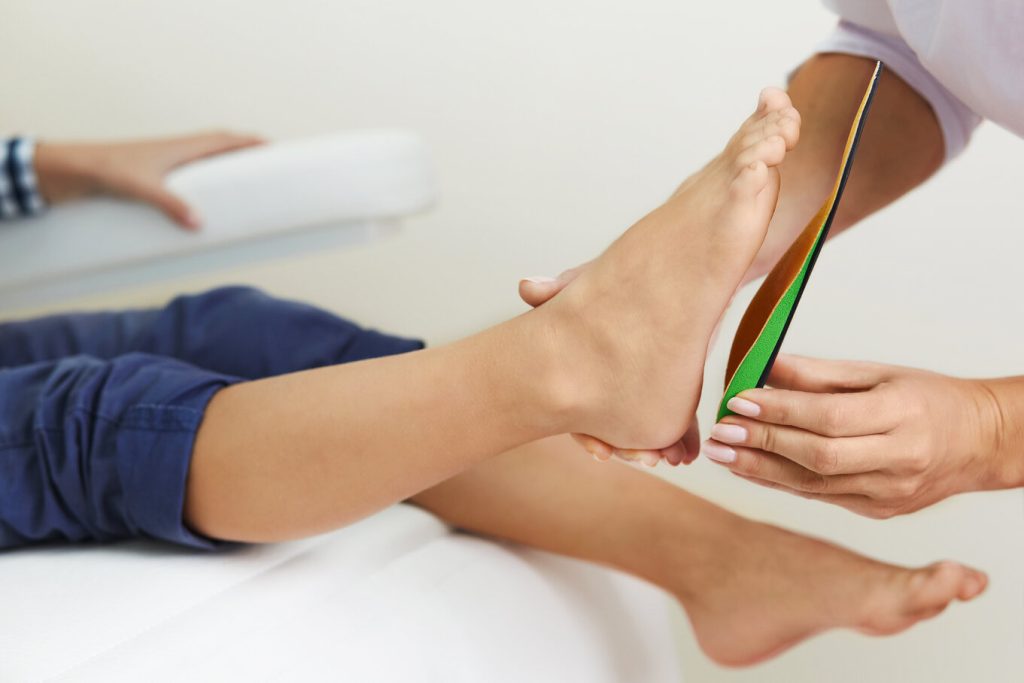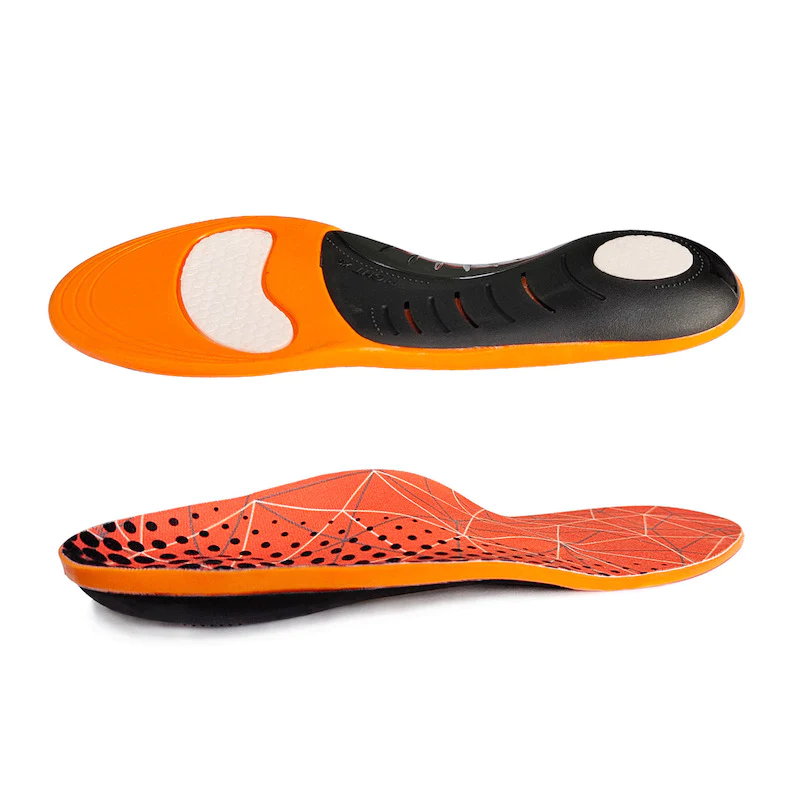Have you ever wondered why some running shoes leave you with aches, while others make you feel like you’re running on clouds? The secret is in the arch support. In this article, we’re diving into the world of running shoes, specifically focusing on those that offer the best arch support.
Finding the right running shoe isn’t just about brand or style; it’s about understanding the unique needs of your feet. Arch support plays a crucial role in this. Whether you’re a seasoned marathoner or a casual jogger, the right arch support can make a significant difference in your comfort, performance, and overall foot health.
Understanding Arch Support:
Arch support in running shoes refers to the design elements that provide support to the arches of your feet. This aspect of shoe design is crucial because it helps distribute pressure across your feet, reduces the impact while running, and maintains proper foot alignment. Adequate arch support can significantly enhance comfort and prevent foot-related injuries.
Types of Foot Arches Foot arches vary from person to person, typically categorized into three types:
- High Arches: High arches tend to be less flexible and require shoes with extra cushioning to absorb shock.
- Low Arches or Flat Feet: People with low arches or flat feet often need shoes with enhanced stability to prevent overpronation (excessive inward rolling of the foot).
- Neutral Arches: Those with neutral arches benefit from a balanced mix of cushioning and support, providing versatility.
Understanding your arch type is pivotal in selecting the right running shoes, as each type demands different support levels.
Benefits of Proper Arch Support Investing in running shoes with proper arch support brings several benefits:
- Injury Prevention: Proper support can reduce the risk of injuries such as plantar fasciitis, shin splints, and knee pain.
- Enhanced Comfort: Shoes with good arch support can prevent discomfort during long runs or intense training sessions.
- Improved Performance: With the right support, your feet are more efficient in propelling you forward, potentially improving your running performance.
- Better Alignment: Good arch support helps maintain proper alignment of your feet, ankles, knees, and hips, contributing to overall better posture and stride.
Recognizing the importance of arch support is the first step in choosing the best running shoes. In the next section, we’ll delve into how you can determine your arch type to make an informed decision about your footwear.
How to Determine Your Arch Type:
Determining your arch type is a fundamental step in selecting the right running shoes, as it influences the level and type of support you need. Here are two effective methods to identify your arch type:
Wet Test for Arch Type
- What You Need: A basin of water, a brown paper bag or a piece of cardboard.
- Procedure: Wet the sole of your foot and step onto the paper bag or cardboard.
- Interpreting Results:
- High Arch: If you see a thin line or large gap between the ball of your foot and your heel, you likely have a high arch.
- Low Arch/Flat Feet: If your footprint shows almost the entire sole of your foot with no noticeable curve on the inside, you have low arches or flat feet.
- Neutral Arch: A footprint with a distinct curve inward but not excessively so indicates a neutral arch.

Professional Assessment
- Visiting a Podiatrist or Running Specialist: For a more detailed analysis, consider visiting a podiatrist or a running shoe specialist. They can assess your arch type and gait through various methods, including visual examination and possibly using equipment like a pressure plate.
- Benefits: A professional assessment can provide a more accurate determination of your arch type, taking into account factors like your gait, foot strike, and any existing foot issues.
By understanding your arch type, you can make a more informed decision when selecting running shoes. This knowledge helps in choosing shoes that provide the appropriate level of support, cushioning, and stability for your feet, thereby enhancing comfort and performance while reducing the risk of injury.
Key Features of Good Arch Support Running Shoes:
- Cushioning
- Purpose: Cushioning helps absorb the impact that your feet endure during running, which is particularly crucial for high arches that don’t naturally absorb shock well.
- What to Look For: Shoes with ample cushioning in the midsole, using materials like memory foam or gel, can provide a comfortable, shock-absorbing layer.
- Stability
- Importance for Low Arches: Runners with low arches or flat feet often experience overpronation, where the foot rolls inward excessively. Stability features in shoes help correct this.
- Features: Look for running shoes with built-in arch support, firmer midsoles, and structured cushioning. Some shoes may also have a medial post or dual-density foam to enhance stability.
- Fit and Comfort
- Perfect Fit: The right fit is crucial. Ensure there’s enough room in the toe box, and the shoe snugly fits around the midfoot and heel without being too tight.
- Comfort: Pay attention to the overall comfort, which includes how the shoe feels when you’re running, not just when you’re standing.
- Arch-Specific Design
- High Arches: Shoes designed for high arches typically have more cushioning and a softer midsole to compensate for the lack of natural shock absorption.
- Low Arches: Shoes for low arches usually have more structured support to prevent overpronation.
- Neutral Arches: Neutral arch shoes offer a balance of cushioning and support, suitable for most runners.
- Breathability
- Material: The upper material of the shoe should allow for adequate air circulation to keep your feet cool and dry.
- Ventilation: Look for shoes with mesh or other breathable materials.
- Flexibility
- Importance: A certain degree of flexibility in the shoe allows for natural foot movement, which is especially important for high arches that require more give in the shoe.
- Durability
- Materials and Construction: Durable materials and solid construction ensure that the shoes withstand the wear and tear of running.
- Longevity: Good quality running shoes should ideally last between 300 to 500 miles.
Top Running Shoes for Different Arch Types:
Selecting the right running shoes is crucial for comfort, performance, and injury prevention, especially when considering your specific arch type. Here’s a guide to some of the top running shoes designed to cater to different arch types:
Best for High Arches
High arches require shoes with extra cushioning and flexibility. Look for shoes that offer ample shock absorption and a softer midsole.
- Asics Gel-Nimbus: Known for its exceptional cushioning, the Gel-Nimbus is a favorite among runners with high arches.
- Brooks Glycerin: This shoe offers plush cushioning, making it ideal for high-arched runners seeking comfort on long runs.
- Nike Air Zoom Pegasus: With its responsive cushioning and supportive fit, the Pegasus is a versatile option for high arch runners.
Best for Low Arches or Flat Feet
Runners with low arches or flat feet need shoes that provide stability and support to prevent overpronation.
- Brooks Adrenaline GTS: This shoe is renowned for its stability and support, ideal for runners with low arches.
- Asics GT-2000: Offering a combination of support and cushioning, the GT-2000 is a solid choice for overpronators.
- Saucony Guide: The Guide series provides reliable support and is well-suited for those with flat feet.
Best for Neutral Arches
Neutral arches benefit from a balance of cushioning and support, providing versatility for different running styles.
- Nike Zoom Pegasus Turbo: Combining speed and comfort, this shoe is a top pick for neutral runners.
- Adidas UltraBoost: Known for its responsive cushioning and comfort, the UltraBoost is a popular choice for neutral arches.
- Hoka One One Clifton: This shoe is praised for its lightweight, cushioned design, making it suitable for long-distance runners with neutral arches.
When selecting running shoes, it’s important to consider not just the arch type but also personal preferences in terms of fit, feel, and running style. Trying on several options and even test-running, if possible, can help you find the perfect match for your feet.
Next, we will delve into the considerations you should keep in mind when choosing running shoes, ensuring you make the best choice for your specific needs and preferences.
Considerations When Choosing Running Shoes:
- Material and Durability
- Quality of Materials: Look for high-quality materials that can withstand regular use. The durability of the shoe’s upper, midsole, and outsole is crucial.
- Breathability: Materials should also offer good breathability to keep your feet cool and dry.
- Brand Reputation
- Reputable Brands: Consider brands known for their quality and innovation in running shoes. Brand reputation can often be a good indicator of overall shoe quality.
- Research and Reviews: Read reviews and research to understand the strengths and weaknesses of each brand and model.
- Price vs. Quality
- Budget: Determine your budget but be willing to invest in quality for the sake of comfort and foot health.
- Value for Money: Higher price doesn’t always mean better quality, but generally, investing in a reputable brand ensures longevity and better performance.
- Fit and Size
- Proper Sizing: Ensure the shoes fit well. Your feet can swell when running, so there should be about a thumb’s width of space in the toe box.
- Try Before You Buy: If possible, try on shoes in the evening (when your feet are largest) and bring your running socks for an accurate feel.
- Running Style and Terrain
- Type of Running: Your shoe choice may vary depending on whether you’re a sprinter, long-distance runner, or trail runner.
- Terrain: Consider the surfaces you’ll be running on. Road running shoes differ from trail running shoes in terms of grip and stability.
- Personal Needs and Preferences
- Foot Problems: If you have specific foot issues (like plantar fasciitis), look for shoes that cater to these conditions.
- Personal Comfort: Comfort is subjective, so choose shoes that feel right for you.
- Functionality vs. Aesthetics
- Prioritize Function: While style is important, functionality and fit should take precedence for running shoes.
- Aesthetics: Fortunately, many high-quality running shoes also come in various styles and colors.
- Return Policy and Warranties
- Flexible Return Policies: Look for stores or brands that offer a generous return policy, especially if you’re trying a new model or brand.
- Warranty: Check if there’s a warranty, which can be beneficial in case of defects.
Common Mistakes to Avoid:
- Ignoring Your Arch Type
- Consequence: Choosing a shoe that doesn’t match your arch type can lead to discomfort, poor performance, and even injury.
- Solution: Determine your arch type and select shoes that provide the appropriate level of support.
- Choosing Style Over Function
- Consequence: Being swayed by the latest trends or designs might result in choosing shoes that are not suitable for your feet or running style.
- Solution: Prioritize functional features like support, cushioning, and fit over aesthetics.
- Not Trying Before Buying
- Consequence: Shoes might feel different when running compared to just trying them on.
- Solution: Always try on shoes and, if possible, perform a short run or jog within the store or on a treadmill.
- Overlooking Shoe Life Span
- Consequence: Old or worn-out shoes can cause injuries due to reduced support and cushioning.
- Solution: Replace your running shoes every 300 to 500 miles or as soon as they show significant wear.
- Ignoring Fit and Size Variations
- Consequence: Different brands and models can have variations in fit and size.
- Solution: Don’t rely solely on your usual shoe size. Always try on different sizes and brands to find the best fit.
- Neglecting Personal Comfort and Needs
- Consequence: Just because a shoe is highly rated doesn’t mean it will suit your specific needs.
- Solution: Consider any personal preferences or requirements, like wider toe boxes or extra cushioning.
- Sacrificing Fit for Price
- Consequence: Opting for a cheaper shoe might lead to discomfort or lack of necessary features.
- Solution: View running shoes as an investment in your health and performance. Quality should take precedence over price.
- Overlooking Terrain and Usage
- Consequence: Using the same shoes for different terrains or sports can lead to poor performance or increased risk of injury.
- Solution: Select shoes based on the primary terrain and purpose of your runs.
Maintenance Tips for Running Shoes:

- Cleaning Your Shoes
- Regular Cleaning: Remove dirt and debris after each run, especially if you’ve been running on trails or in muddy conditions.
- Washing: If necessary, clean your shoes with mild soap and water. Avoid using harsh detergents or submerging them in water.
- Drying: Never put your running shoes in the dryer. Instead, let them air dry away from direct heat or sunlight.
- Proper Storage
- Avoid Extreme Temperatures: Store your shoes in a cool, dry place to prevent materials from breaking down.
- Air Them Out: Allow your shoes to air out between runs, which helps reduce odor and moisture buildup.
- Regular Cleaning: Remove dirt and debris after each run, especially if you’ve been running on trails or in muddy conditions.
- Washing: If necessary, clean your shoes with mild soap and water. Avoid using harsh detergents or submerging them in water.
- Drying: Never put your running shoes in the dryer. Instead, let them air dry away from direct heat or sunlight.
- Rotating Shoes
- Multiple Pairs: If you run frequently, consider rotating between two pairs of shoes. This gives each pair time to recover and extends their lifespan.
- Monitoring Wear and Tear
- Inspect Regularly: Check for signs of wear, such as smooth soles, compressed midsoles, or tears in the upper material.
- Replace When Necessary: Running shoes typically need replacing after 300 to 500 miles, depending on your running style and the shoe’s quality.
- Use As Intended
- Specific Usage: Use your running shoes solely for running to prevent unnecessary wear from other activities.
- Terrain Appropriate: Use the right shoes for the right terrain (e.g., trail shoes for trails).
- Lacing Techniques
- Proper Lacing: Ensure your shoes are laced correctly for a secure fit. Different lacing techniques can address issues like heel slippage or pressure points.
- Insole and Lining Care
- Clean Insoles: Remove and clean insoles occasionally to keep them fresh.
- Replace Insoles: Consider replacing insoles if they become worn out before the rest of the shoe.
User Experiences
Real user experiences can provide valuable insights into the performance and comfort of specific running shoes. Here are a few user testimonials to give you an idea of how certain shoes have benefited runners:
- Sarah’s Story – Asics Gel-Nimbus
- Arch Type: High Arches
- Experience: “I’ve always had issues with discomfort and foot fatigue during long runs due to my high arches. That changed when I switched to the Asics Gel-Nimbus. The cushioning in these shoes is fantastic, and I can now go for miles without any discomfort. They are my go-to choice for marathons.”
- Mike’s Feedback – Brooks Adrenaline GTS
- Arch Type: Low Arches
- Experience: “Being a runner with low arches, I struggled with overpronation for years. The Brooks Adrenaline GTS has been a game-changer. They provide excellent stability and support, and I no longer experience knee pain after my runs.”
- Emily’s Take – Nike Zoom Pegasus
- Arch Type: Neutral Arches
- Experience: “As a neutral arch runner, I needed a versatile shoe that could handle various terrains. The Nike Zoom Pegasus has been my reliable companion. It offers just the right balance of cushioning and support, whether I’m on the road or the trails.”
- John’s Review – Hoka One One Clifton
- Arch Type: Neutral Arches
- Experience: “I was looking for a lightweight shoe with maximum cushioning for my neutral arches. The Hoka One One Clifton exceeded my expectations. It feels like running on clouds, and I’ve had fewer instances of post-run soreness.”
